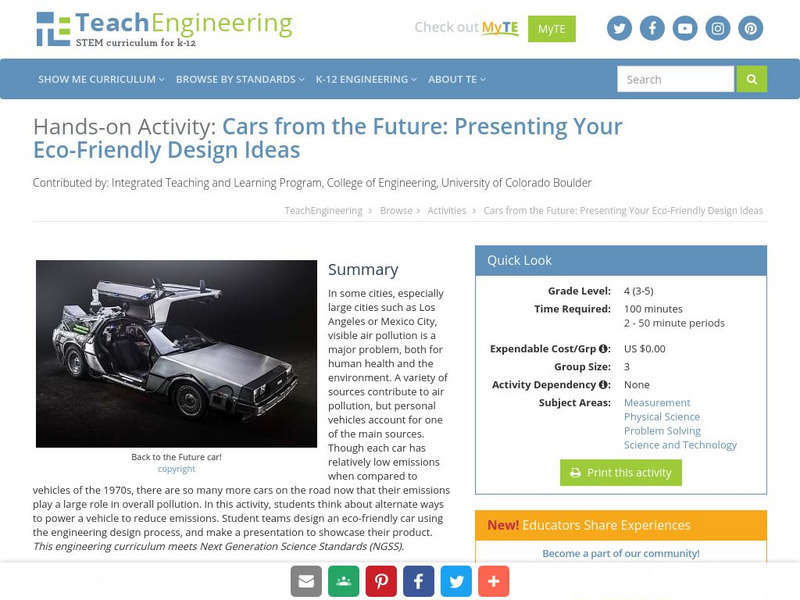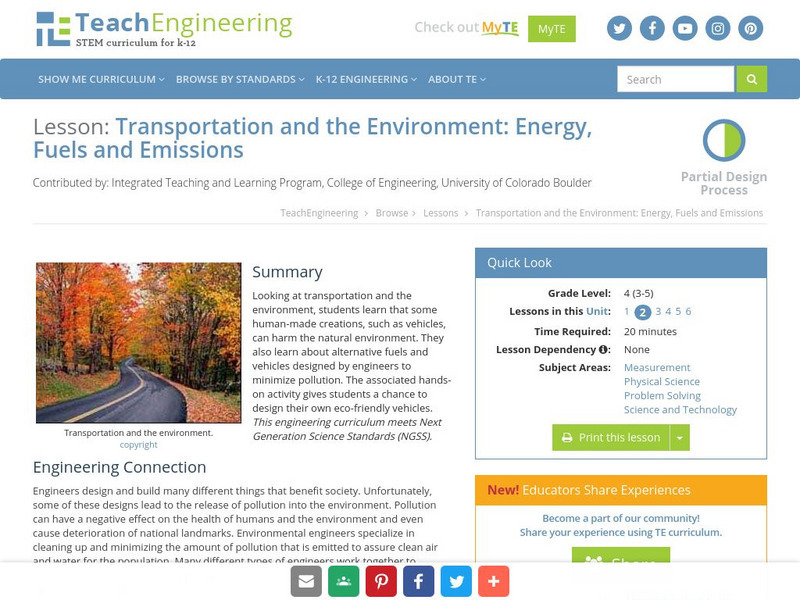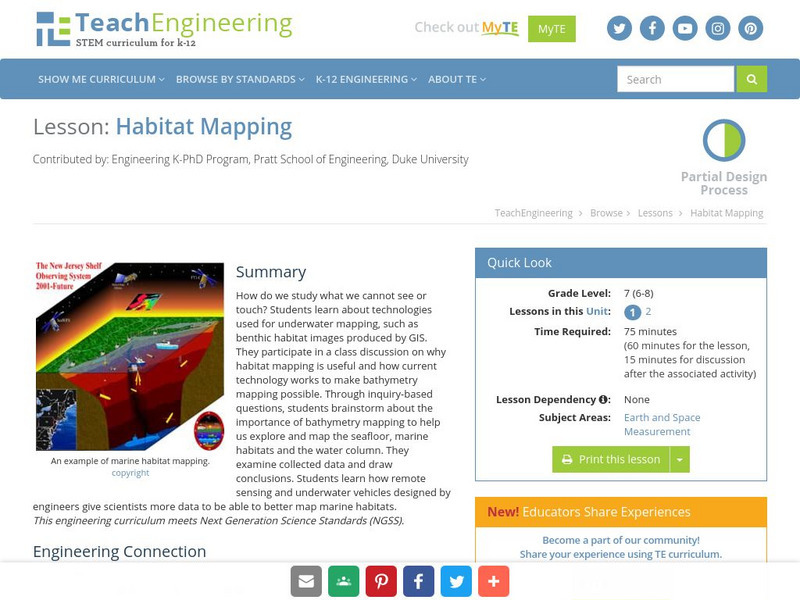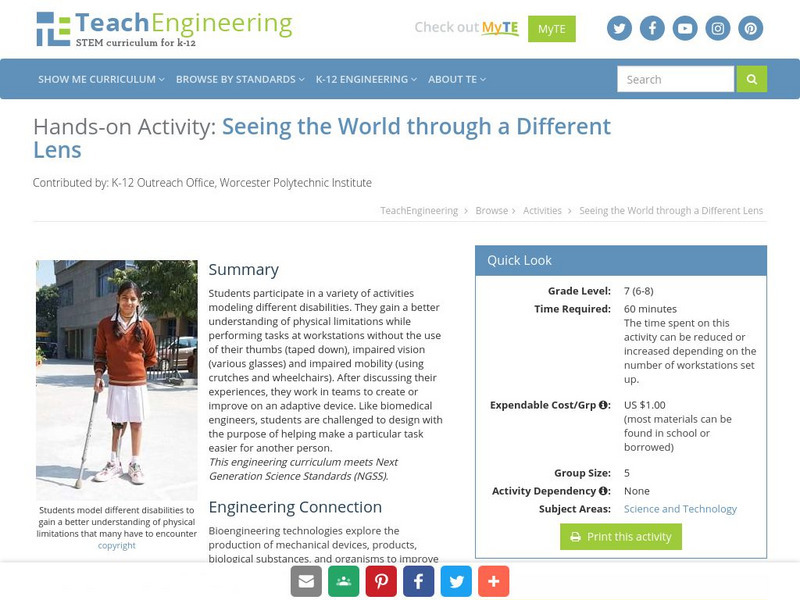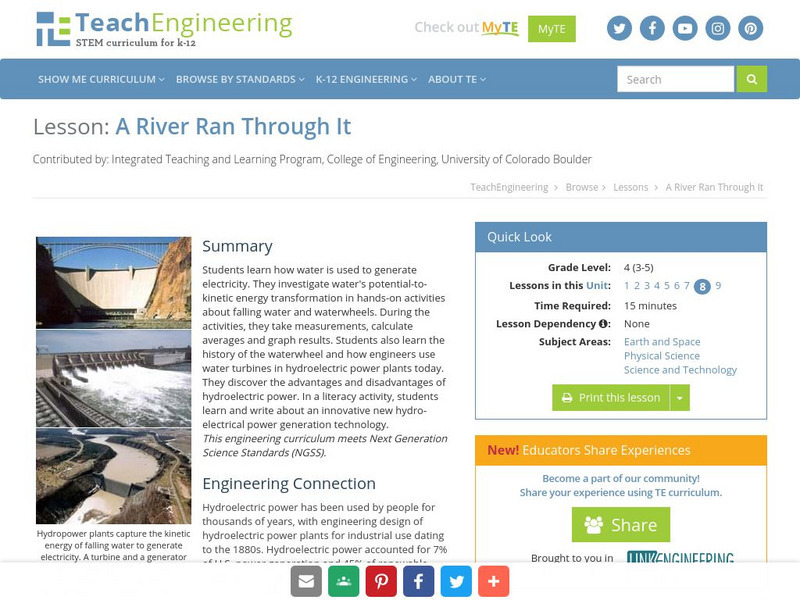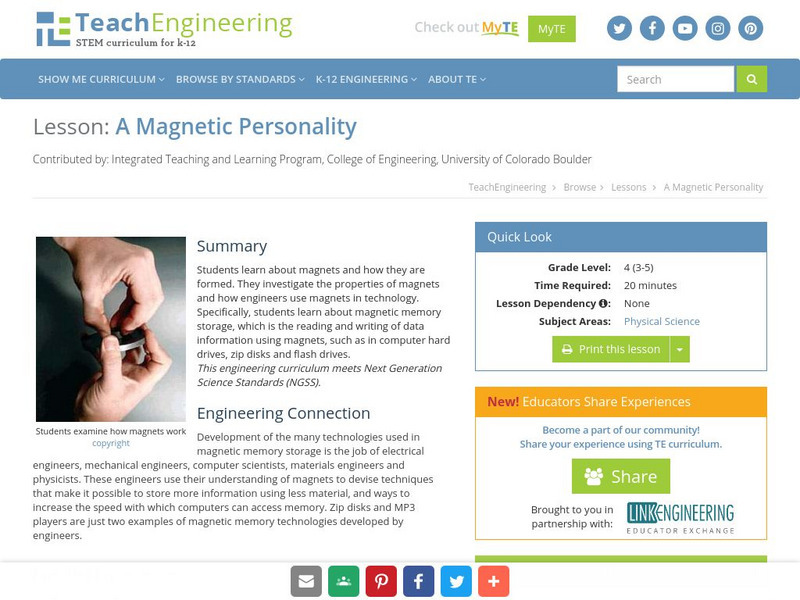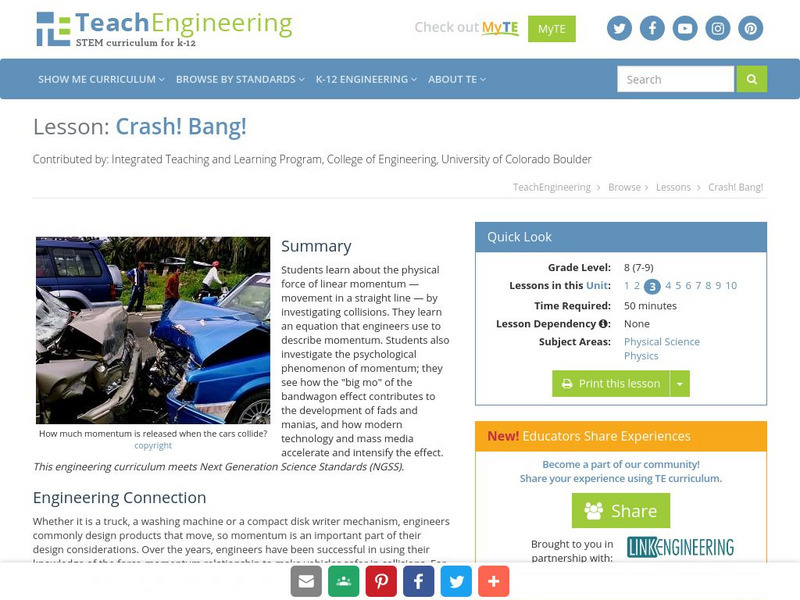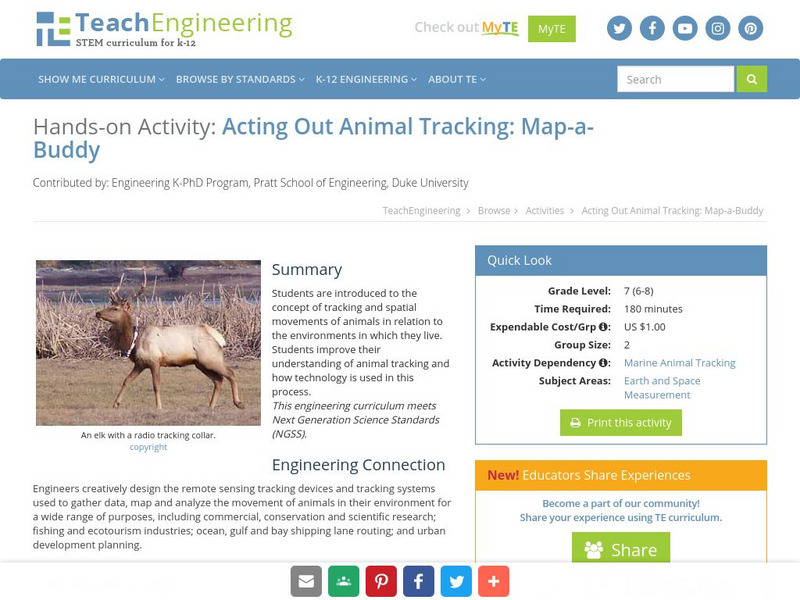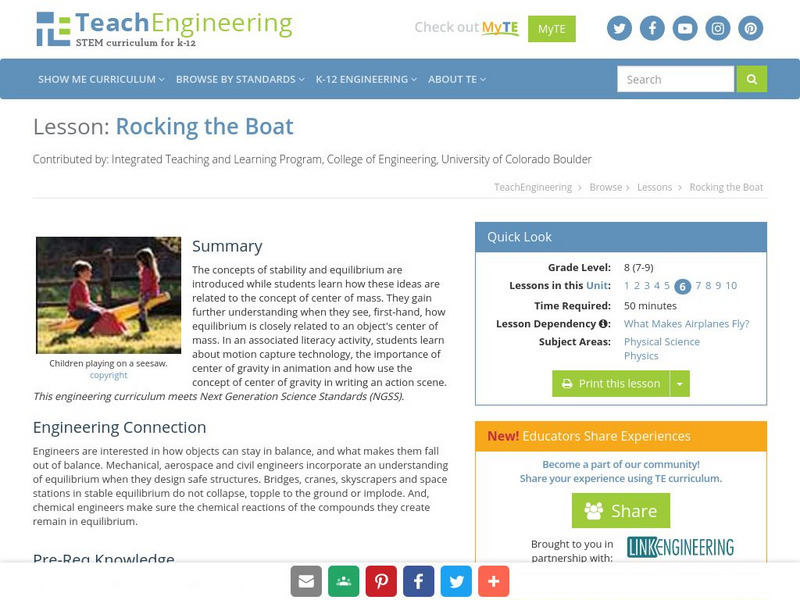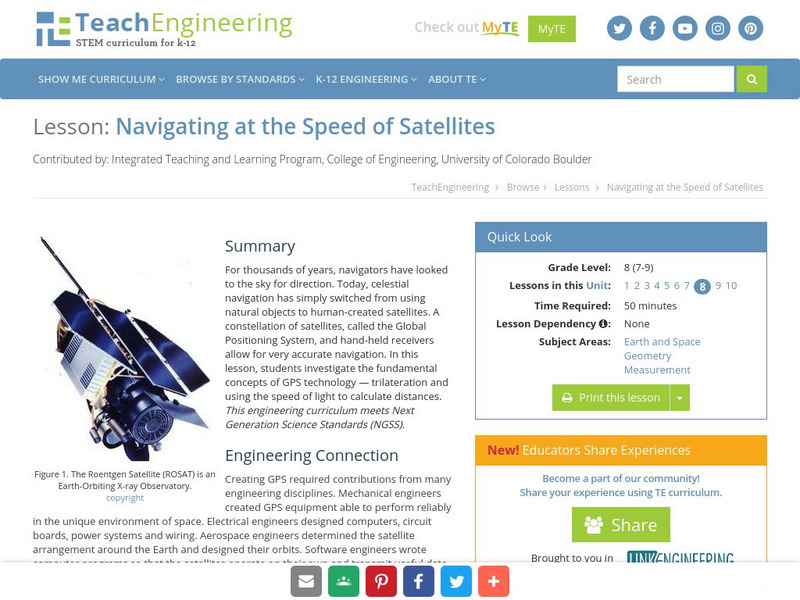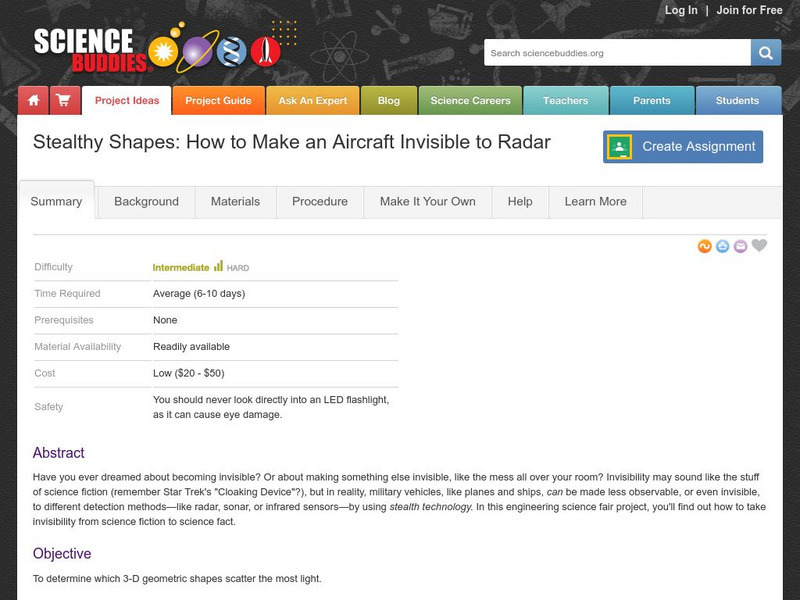TeachEngineering
Teach Engineering: Cars From the Future
Students learn about air pollution caused by cars and what engineers are doing to try to help with the problem. Students then design their own environmentally friendly car and give a presentation to experience how engineers have to be...
Google Cultural Institute
Google Cultural Institute: Women in Science, Technology, Engineering, and Math
Explore the historic reasons women are underrepresented in science, technology, engineering, and mathematics today.
PBS
Pbs Learning Media: Technology Over Time
In this interactive activity adapted from A Science Odyssey, learn how technology in the home has changed through the years. Scroll through a timeline from 1900 to 2010 to explore technological innovations in the home (such as...
PBS
Pbs Teachers: Technology and Ethics
Investigate the meaning of ethics and morality as applied to technology and scientific advances. Research various issues related to scientific, technological and medical advances in the past decade and take a stand on each.
TeachEngineering
Teach Engineering: Transportation and the Environment
Looking at transportation and the environment, young scholars learn that some human-made creations, such as vehicles, can harm the environment. They also learn about alternative fuels and vehicles designed by engineers to minimize...
TeachEngineering
Teach Engineering: A Case of Innovation
A white paper is a focused analysis often used to describe how a technology solves a problem. In this literacy activity, students write a simplified version of a white paper on an alternative electrical power generation technology. In...
TeachEngineering
Teach Engineering: The Big Mo
Momentum is not only a physical principle; it is a psychological phenomenon. Students learn how the "Big Mo" of the bandwagon effect contributes to the development of fads and manias, and how modern technology and mass media accelerate...
TeachEngineering
Teach Engineering: Habitat Mapping
The marine environment is unique and requires technologies that can use sound to gather information since there is little light underwater. In this lesson, the middle schoolers will be shown benthic habitat images produced by GIS. These...
TeachEngineering
Teach Engineering: Seeing the World Through a Different Lens
Students will participate in a variety of activities modeling different disabilities. After discussing their experiences, students work in teams to devise or improve on an adaptive device.
TeachEngineering
Teach Engineering: Seeing the World Through a Different Lens
Students will participate in a variety of activities modeling different disabilities. After discussing their experiences, students work in teams to devise or improve on an adaptive device.
Center for Innovation in Engineering and Science Education, Stevens Institute of Technology
Center for Innovation in Engineering and Science Education: Reverse Engineering
Learners use reverse engineering to examine, classify, diagram, and identify the purpose and technological impacts of the components of two different single-use cameras.
TryEngineering
Try Engineering: Temperature Tactics
Students practice the engineering design process as they explore devices used to measure changes in temperature. They work in teams to design, build, test, and evaluate their own temperature gauge made from everyday materials.
TryEngineering
Try Engineering: Shake It Up With Seismographs
During this lesson, students learn how seismographs work and how technology has impacted the world by helping save lives from earthquakes. They will work in teams to design, test, and evaluate the results of their own seismographs, then...
TeachEngineering
Teach Engineering: A River Ran Through It
Students learn how water is used to generate electricity. They investigate water's potential-to-kinetic energy transformation in hands-on activities about falling water and waterwheels. During the activities, they take measurements,...
TeachEngineering
Teach Engineering: A Magnetic Personality
Students learn about magnets and how they are formed. They investigate the properties of magnets and how engineers use magnets in technology. Specifically, students learn about magnetic memory storage, which is the reading and writing of...
TeachEngineering
Teach Engineering: Crash! Bang!
Students learn about the physical force of linear momentum - movement in a straight line - by investigating collisions. They learn an equation that engineers use to describe momentum. Students also investigate the psychological...
TeachEngineering
Teach Engineering: Map a Buddy
This activity serves to introduce the concept of tracking and spatial movements of animals in relation to the environment in which they live. The following activity will aid student understanding of animal tracking and how technology...
TeachEngineering
Teach Engineering: Rocking the Boat
The concepts of stability and equilibrium are introduced while students learn how these ideas are related to the concept of center of mass. They gain further understanding when they see, first-hand, how equilibrium is closely related to...
TeachEngineering
Teach Engineering: Navigating at the Speed of Satellites
For thousands of years, navigators have looked to the sky for direction. Today, celestial navigation has simply switched from using natural objects to human-created satellites. A constellation of satellites, called the Global Positioning...
TryEngineering
Try Engineering: Making Sense of Sensors
Lesson explore sensors focusing on ones that measure humidity. Students work in teams to design, build, test, and evaluate a hygrometer which was made out of everyday materials to measure humidity levels.
PBS
Pbs Learning Media: Airplanes: Designing for Stealth
Explore this NOVA: "Battle of the X-Planes" interactive activity to see how engineers have modified a military plane's sound, shape, and heat emissions to minimize detection.
TryEngineering
Try Engineering: Electric Messages: Then and Now
Lesson investigates electronic communication from the Morse Code system to text messaging. To learn about this, students construct simple circuits, send messages to each other, and explore the history and impact of communication.
Science Buddies
Science Buddies: Project Ideas: How to Make an Aircraft Invisible to Radar
In this engineering science fair project, students will determine which 3-D geometric shapes scatter light the most. The Science Buddies project ideas are set up consistently beginning with an abstract, objective, and introduction,...
Oak Ridge National Laboratory
Human Genome Project Overview
Explains the goals of the Human Genome Project. It also explains some of the ethical, legal and social challenges associated with this new technology.
